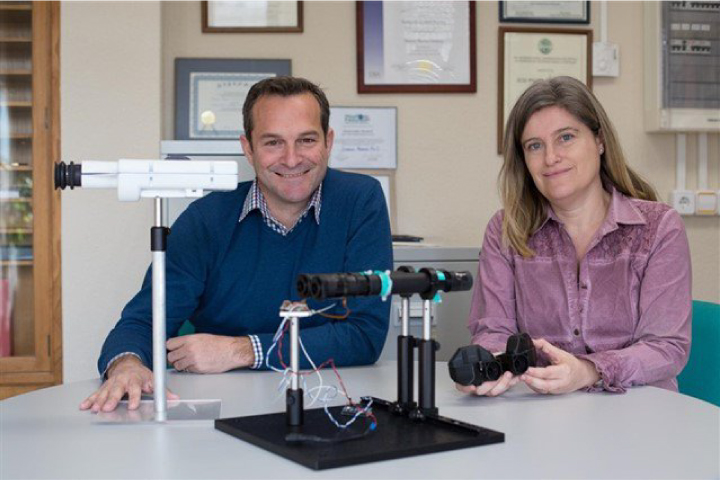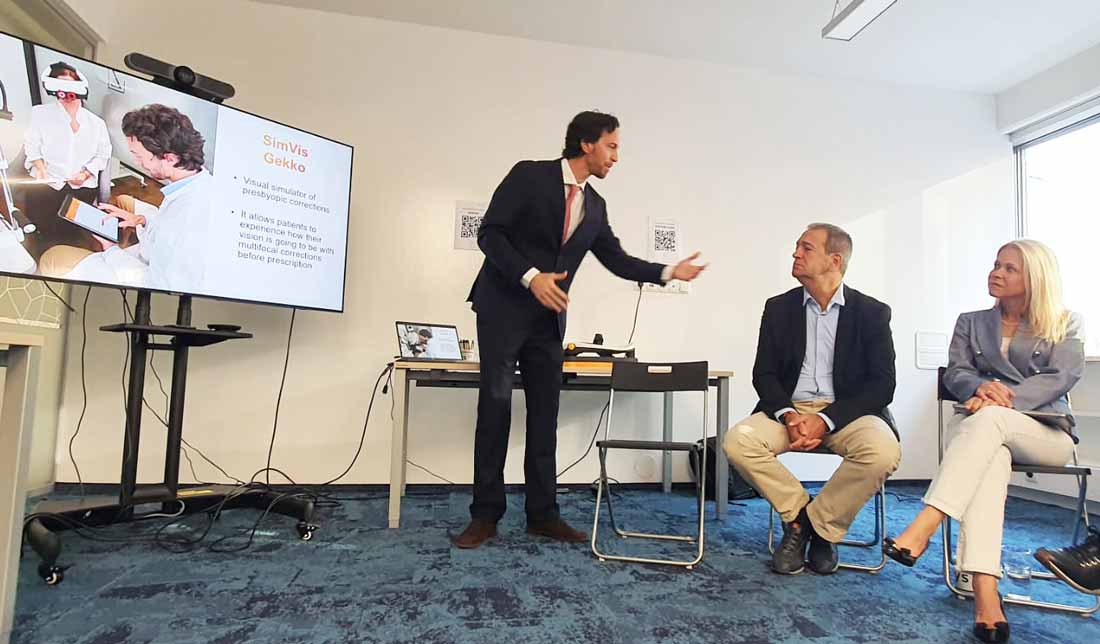Innovative Device Simulates Cataract Replacement Experience
Vision Simulator Helps Patients Test Artificial Lens Designs Prior to Implantation
Today, patients with cataracts can choose from several types of artificial lenses, which are surgically implanted in the eye to replace cloudy lenses that obstruct vision. A new vision simulator could help these patients see how the world would look with each type of implanted artificial lens before they have surgery. In The Optical Society’s journal for high impact research, Optica, researchers in Spain describe and demonstrate their new handheld device called the Simultaneous Vision Simulator, or SimVis. With SimVis, patients can experience how a certain implanted lens would affect their vision by simply looking through the device.
“There are many different intraocular lenses on the market, which provide different balances of near and far vision,” said Aiswaryah Radhakrishan, a researcher at the CSIC. “We have discovered a way to simulate these intraocular lenses and demonstrated a prototype device that allows patients to test different solutions before surgery and choose the one that best suits their needs.”
Choosing the Right Lens
In the last decade, lens companies have designed intraocular lenses that not only replace the cloudy lens of the eye but can also correct the patient’s vision to reduce the need for glasses. This correction is not perfect, however. The natural lens is stretched by muscles in the eye to change its shape, and thus its focal length, to shift from having up-close and far objects in sharp focus on the retina. Current implanted intraocular lenses do not have this capability to change shape like this. Instead, standard intraocular lenses are monofocal, i.e., they correct only far vision, which creates sharp vision for far-away objects but blurred vision for objects close by. Patients would then wear glasses to correct near vision. There are also newer multifocal lenses that focus both near and far objects onto the retina at the same time but with some loss of image quality and contrast for both near and far distances. The choices for monofocal and multifocal intraocular lenses keep growing as more designs enter the market.
“Currently, the decision on which intraocular lens is implanted during cataract surgery is typically based on the explanations and experience of the surgeon,” said Carlos Dorronsoro, first author of the paper. “But it is difficult for patients to imagine the new visual experience provided by some of these lenses; therefore, it is very difficult to make the decision.”
The SimVis Gekko uses an optoelectronic tunable lens that changes shape in response to an applied electric current. To simulate multifocal lenses, the shape of this tunable lens can be switched so quickly that the resulting oscillations in focal positions can be perceived by human vision. A patient looking through the device would see near and far distances in focus at the same time, as well as experiencing the loss of image quality and contrast that comes with multifocal lenses.
The amount of time the plastic lens remains in a particular focus can be used to vary the lens power dedicated to that state. For example, a bifocal lens with 70 percent far and 30 percent near power is simulated by inducing the far state for 14 milliseconds and the near state for 6 milliseconds and then repeating this pattern continuously.
Testing the Vision Simulator
The researchers asked nine volunteers to use the SimVis to compare seven different lenses providing monofocal, bifocal, or trifocal corrections while looking at a poster of a landscape, a laptop, a tablet, and a smartphone, with high contrast text and eye charts placed at different distances. Based on the lens simulations, the testers indicated clear preferences for certain corrections.






0 Comments